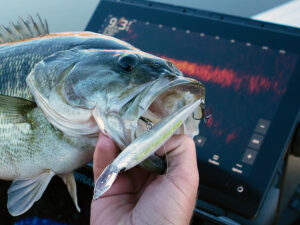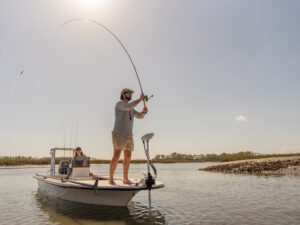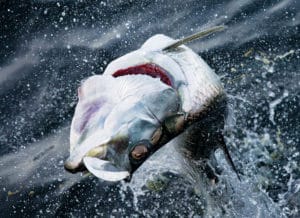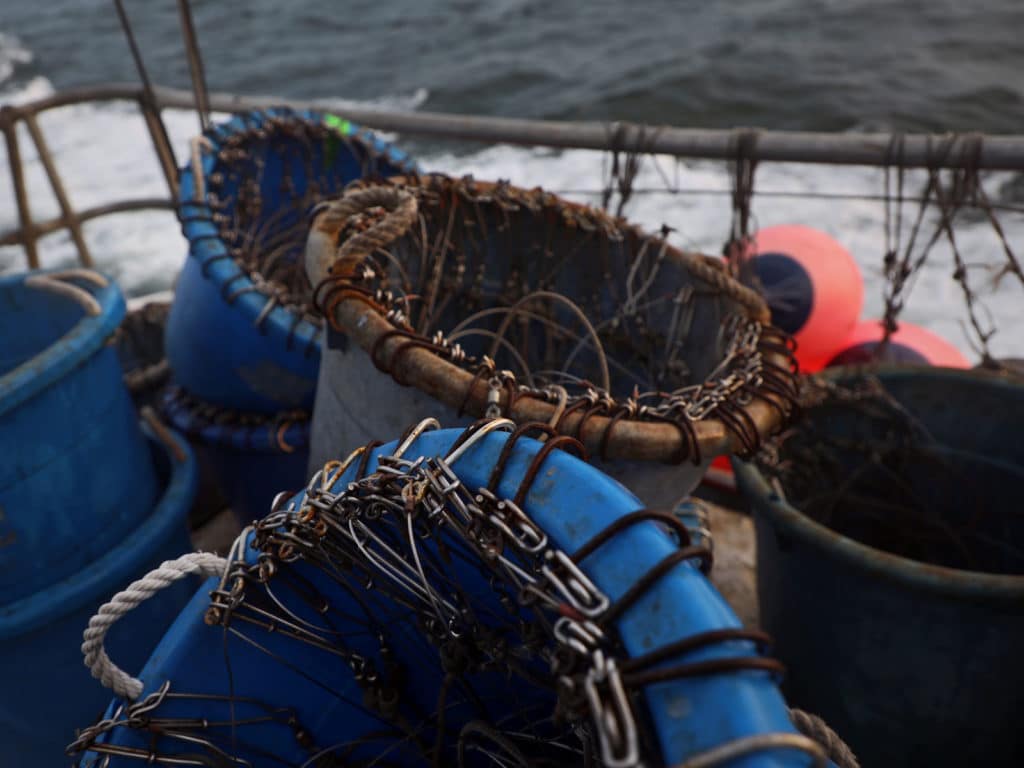
Every minute, the equivalent of one dump truck full of plastic bottles is littered into the ocean. Fishing clothing manufacturers have decided they do not want to be a part of the problem. The Gill Eco Pro Rash Vest uses 13 bottles of recycled plastic in its breathable, fast-dry UPF material. Costa del Mar has saved 33,000,000 water bottles by using recycled plastic in their sunglass frames.
To put it bluntly, fishing apparel companies want to see fewer trucks of plastic dumped into the sea.
Recently, technical clothing manufacturers have made sustainability a core of their design. Not only are clothing companies using recycled and reused materials in their products, but the designers consider environmentally friendly processes and supply chain sustainability in manufacturing. The trend toward more sustainable and durable performance outdoor clothing is a good one, especially for the environment.
How Clothing Companies Help the Environment
One of the easiest ways to make environmentally stable clothing is to keep used, worn-out and damaged clothing out of the landfill. The first qualification for performance clothing is quality. In order to perform, the best clothing for outdoor activities must be crafted to survive the elements.
Clothes must keep anglers cool in the summer and warm in the winter. Clothes must stay dry in the rain and dry in the searing heat. That means performance shirts, pants, socks, shoes, hats and outerwear need to employ every technological design and material advantage. Environmentally friendly gear is great, but it has to meet anglers’ standards for performance.
No one knows more about performance clothing than Simms fishing products. The company’s clothing is preferred by many professional guides from freshwater trout streams to the Gulf Stream. Simms has made sustainability part of their business plan.
“We are in the midst of a long-term sustainability roadmap,” says John Frazier, a manager at Simms. The final plan will include preferred materials that consider environmentally friendly processes throughout manufacturing to transport and packaging.
“One example of preferred materials is recycled materials,” Frazier says. Some of Simms most technical clothing is also made from recycled fibers. Frazier points to the Challenger Suit which uses 100 percent recycled materials from its advanced three-layer fabric to the features and accents.
Keep Needless Waste Out of the Landfill
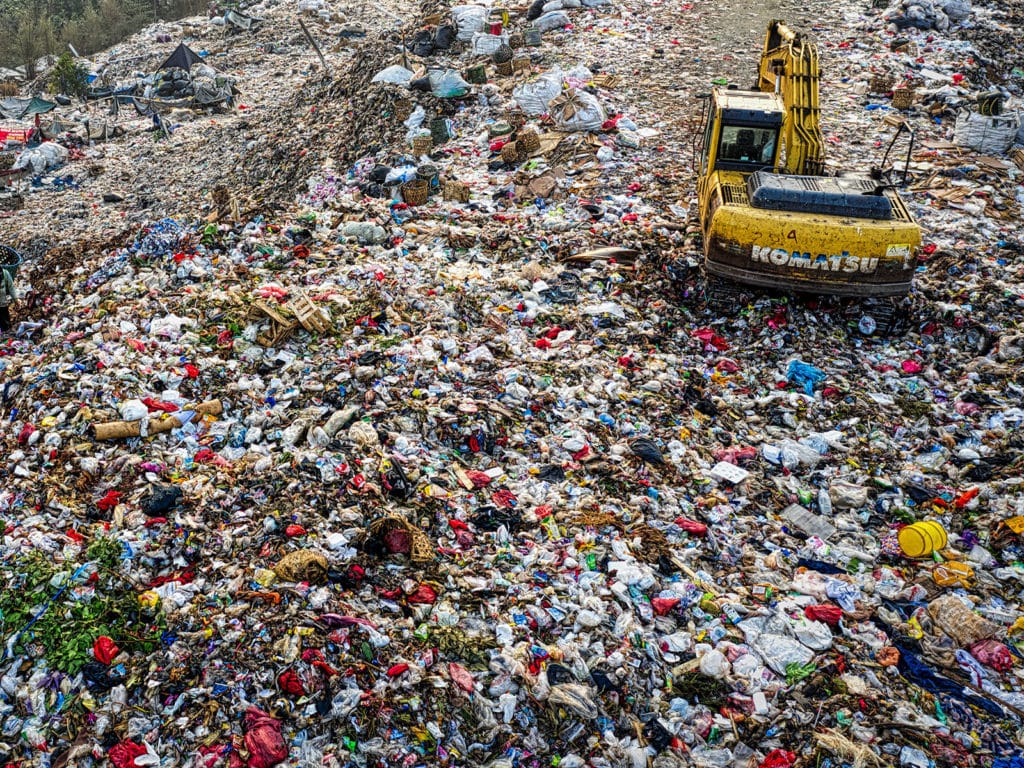
The first step in reducing waste is keeping old gear out of the landfill. “Not only do we build our products to endure every day abuse season after season to benefit our consumers, we build products that last to limit what goes in the landfill,” says Frazier.
A perfect example is the Simms Fall Run Hoody. From late fall through early spring, a hoody is a great defense against the cold and damp. The Fall Run hoody is a quilted puffy jacket with a water-resistant coating. It keeps in warm air and blocks spray and dew. When the sun comes out, stuff the jacket into a pocket of a gear bag for easy storage.
In addition to using recycled outer fabric, the Fall Run Hoody is stuffed with recycled Primaloft Black Eco insulation. The jacket is warm and dry, but it is also tough. The front and back use interior insulation to keep the outer layer abrasion resistant. The design prevents the fabric from wearing out when worn beneath waders or a rain jacket. Frazier says, “We are not in the business of making disposable gear, we build for the long haul.”
Recycled Plastic Used in Clothes
The dangers of plastic pollution are well documented. So are the possibilities for sustainability. From manufacturer to the end user and back again, plastic has an endless lifespan in nature and on the store shelves.
One of the most popular ways to reduce pollution is removing plastic from the environment and reusing it in consumer products. Gill sportswear is committed to reducing ocean pollution, evidenced by products like their OS2 high-performance jacket and bib that are made of 98% recycled material including plastic from ocean-sourced bottles. “The OS2 is our most sustainable foul-weather gear,” says Christopher Hong, senior account manager at Gill.
The suit represents the company’s effort to reduce pollution and maintain quality without increasing price. The OS2 uses Gill’s best waterproof, breathable fabric and treatment to maintain the highest level of performance. Hong says Gill started with a few products made of recycled materials and has expanded to many of their best products. He adds, “The choice and availability improves and we’re looking at fabrics that use less water, require less energy and produce less carbon dioxide.”
Fishing Sunglasses Utilize Recycled Materials
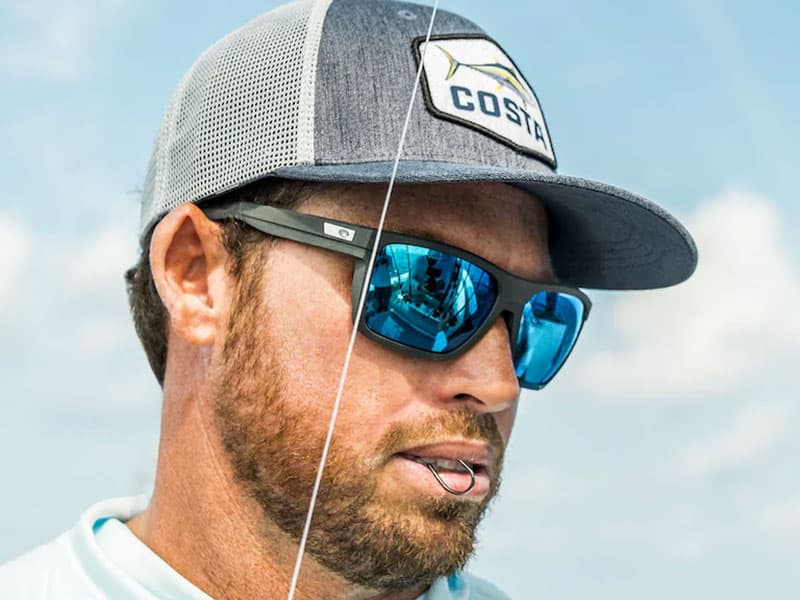
Companies that produce performance fishing gear feel a strong commitment toward plastic reduction because most of their products include plastic. From lenses to frames, sunglasses use a lot of plastic. Recognizing that, Costa del Mar has been a leader in sustainable manufacturing.
Not only do they use recycled and reused materials, but they promote the practice with their Kick Plastic and Untangle Our Ocean campaigns. Jessica Bryant, senior brand marketing manager at Costa del Mar says, “Since 2016, Costa hasn’t used any traditional plastic in our frames.”
One example is Costa’s Untangled 2.0 sunglass collection. The high-performance fishing sunglasses are made of plastic recycled from discarded fishing nets. Each year, up to 100 million pounds of commercial fishing gear is dumped into the ocean. Since the source of this pollution is easy to identify, collecting the plastic is more efficient.
But the commitment doesn’t end at the plastic. The Untangled collection from Costa del Mar features glass lenses that are 100-percent recyclable. Even the accents and keepers are made of recycled aluminum. Bryant says, “We have a minimum threshold for durability that is our team’s golden checkbox when identifying new opportunities, even ones made from recycled materials.”
Costa even added material from recycled nets to their clothing line. A favorite Untangled printed hat uses 100-percent recycled material, even the brim insert is made of recycled fishing nets.
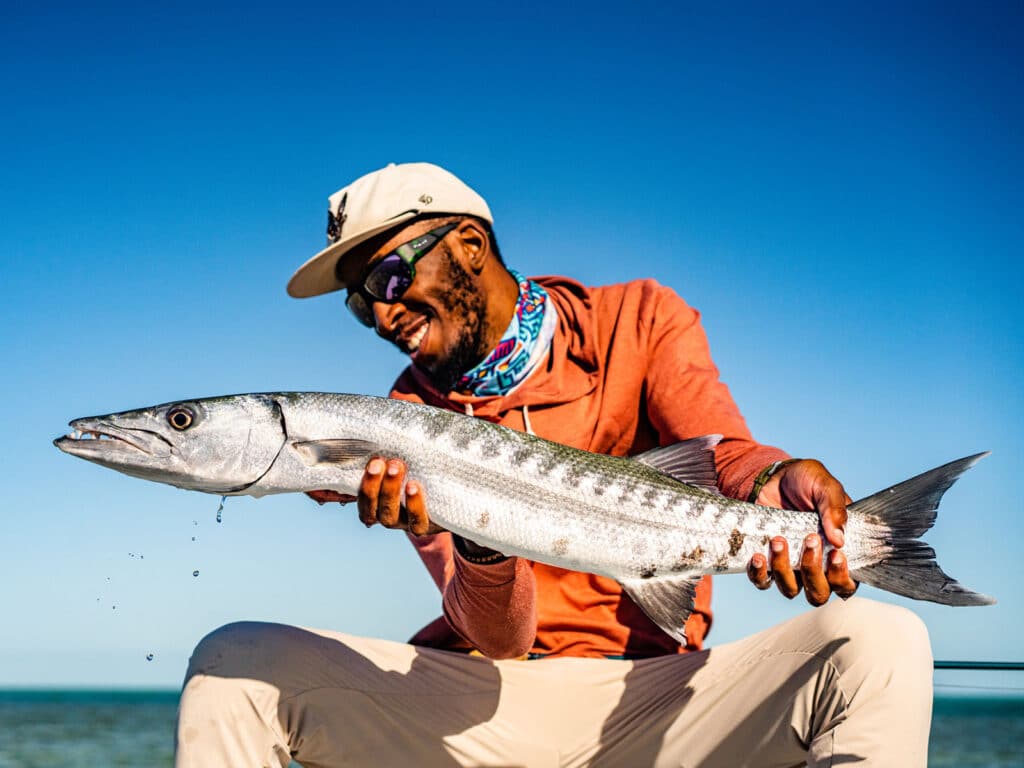
Another sunglasses company, Bajio, uses castor-based bioplastic frames, coconut husk-based frames, and will soon produce frames made from recycled water bottles, ocean trash and carpet remnants. Bajio’s sunglass packaging is made from 100-percent recycled paper. And the company has been carbon neutral from its inception — they’ve done it through planting mangroves via a “trash-to-treasure” project in 2022. Beyond that, the sunglass company has completed a number of conservation projects including beach and river cleanups, such as its Project Rooster in Xcalak, Mexico.
The End Game
For clothing companies, incorporating sustainable materials and process in their products is easier. First, consumers are looking for environmentally friendly options for all their purchases. Second, recycled and repurposed materials are easier to obtain and turn into high-tech performance clothing. Finally, sustainable manufacturing processes that use less energy, water and other resources while producing less waste also cost less money allowing for greater profits.
As you start to gear up for the fishing season, consider high-quality performance clothes that are good for the environment. It’s a win for the consumer, company and ocean.

